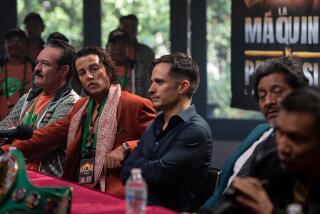Review: In ‘The Cordillera of Dreams,’ Patricio Guzmán completes his powerful Chilean trilogy
“The Cordillera of Dreams,” the latest documentary from the 78-year-old Chilean filmmaker Patricio Guzmán, opens with breathtaking views of the Andes Mountain ranges as seen from Santiago, the city of his birth. The beauty of these images is undeniable, if also a little deceptive. Contemplative, analytical and troubling, this is a nature film refracted through a historical trauma, a compilation of visual wonders that doubles as an act of remembrance. Like Guzmán’s earlier nonfiction works “Nostalgia for the Light” and “The Pearl Button,” it takes an indelible feature of Chile’s landscape and treats it as a gateway into a deep and painful consideration of the country’s recent history.
The cordillera is the most physically concrete of these metaphors and, in some ways, the most abstract and elusive. Unlike the Atacama Desert in “Nostalgia for the Light” or the Pacific Ocean in “The Pearl Button,” the Andes did not serve as a mass burial site for the men and women murdered under the brutal 1973-1990 regime of Augusto Pinochet. Running almost the entire length of Chile and shown looming over the streets and buildings of Santiago, the mountains are at once remote and ever present, immovable and even indifferent in the face of momentous human change.
But if the cordillera is something of “a grand mystery,” to quote one of the writers, artists and activists Guzmán interviews, it also gives rise to a number of possible interpretations that are anything but rigid. One subject describes the mountains as a kind of maternal guardian. Another sees them as an evolutionary time capsule, preserving traces of a world untainted by human activity. Still others describe the mountains as both protector and prison; they have deterred attacks and invasions from Chile’s neighbors, but they have also encouraged a troubling isolationism and encouraged rigid stratifications along class and economic lines.
Guzmán has his own thoughts. A master of the essay film, he follows an established pattern — though not exactly a formula — of layering personal ruminations over majestic visuals. He and his cinematographer, Samuel Lahu, let their camera soar through piercing blue skies and come to rest over spectacular snow-capped peaks and prehistoric rock formations; the sense of stillness and isolation is overpowering. We are in a world that few will ever know, and that few even bother to think about.
The director acknowledges that he himself paid little attention to the mountains while he was growing up in their shadow. Although they were visible from afar (and were co-opted as logos for matchbooks and other products), they seemed irrelevant to the experience of young Chileans who, like him, were focused on revolution. Those efforts, and the 1973 coup d’état that overthrew Salvador Allende and installed Pinochet’s military dictatorship, were chronicled in Guzmán’s landmark three-part documentary, “The Battle of Chile,” released in 1975, 1976 and 1979.
The director fled Chile after shooting that film and has lived abroad ever since. In “The Cordillera of Dreams,” he acknowledges the sense of alienation he still experiences as an expatriate artist, the strangeness of returning to a country he no longer really recognizes. He speaks admiringly, but with a twinge of personal regret, about his most significant interviewee, the tireless filmmaker and archivist Pablo Salas, who stayed behind and spent years documenting acts of protest and resistance throughout Chile. His riveting footage of the coup and its aftermath lend the movie its toughest, most harrowing moments.
Although Salas and Guzmán took opposite paths, both filmmakers have devoted their lives to the preservation of their country’s historical memory. And both speak with eloquent force about the possibility that this important work will someday be discontinued or forgotten — an alarming prospect in a country still reckoning with the horrors of the Pinochet regime. As Salas and others note, the institutional structures that enabled the dictatorship are still very much in place today, as evidenced by a society that is superficially more prosperous but marked by severe disparities of wealth, class and power.
To turn the camera on such suffering is a vital, sometimes heroic act. To turn the camera on rocks and glaciers may be a less intuitive form of resistance, but one that Guzmán invests with its own powerful meaning. The mountains deserve our respect as well as our awe, he insists, for their role is that of a silent witness, a haunting and haunted observer to the destruction of countless lives. They are a mighty presence, and they testify to an equally mighty absence.
‘The Cordillera of Dreams’
In Spanish with English subtitles
Not rated
Running time: 1 hour, 25 minutes
Playing: Starts Feb. 21, Lumiere Music Hall, Beverly Hills
More to Read
Only good movies
Get the Indie Focus newsletter, Mark Olsen's weekly guide to the world of cinema.
You may occasionally receive promotional content from the Los Angeles Times.











